Ambrosia ambrosioides, Canyon Ragweed
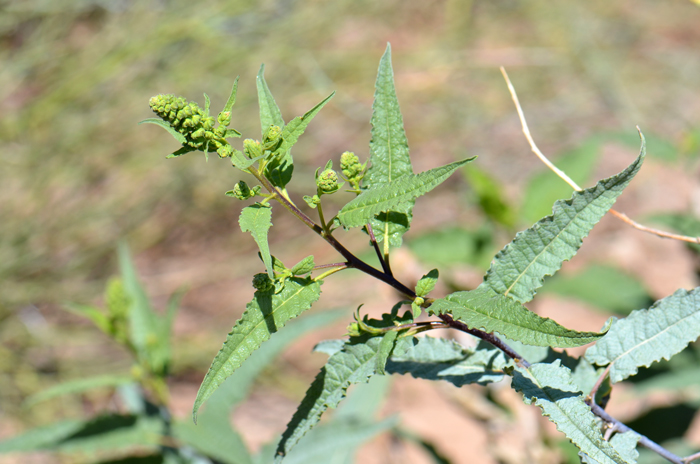
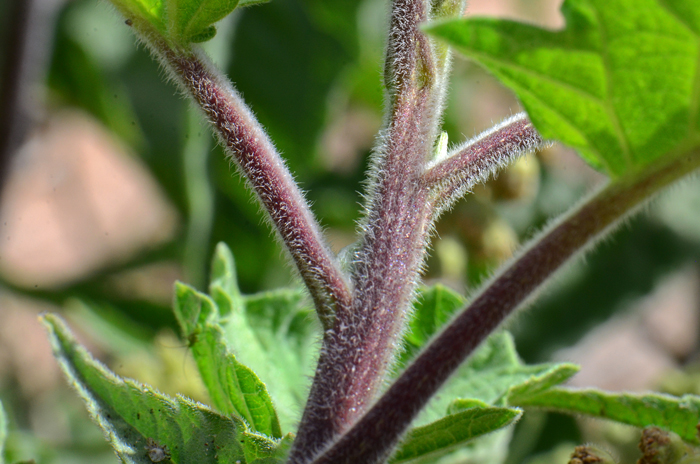
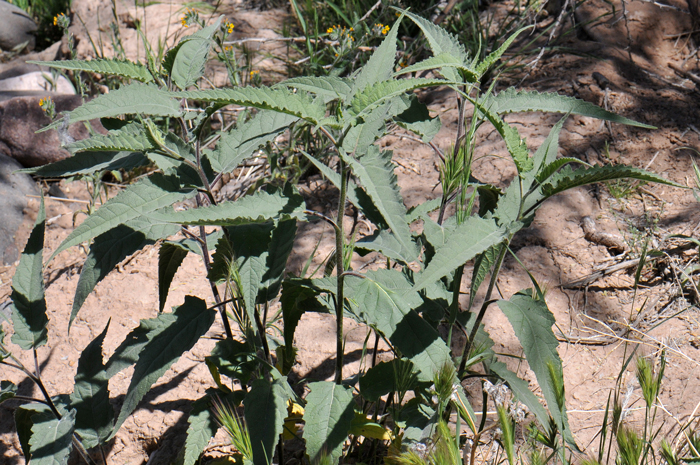
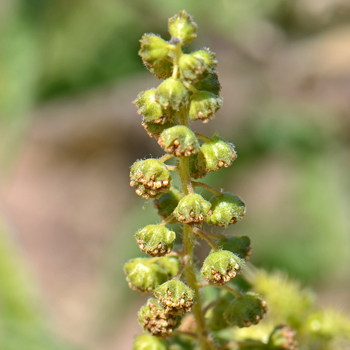
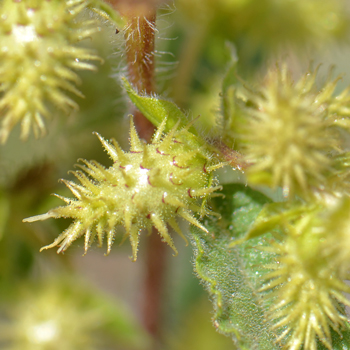
Scientific Name: Ambrosia ambrosioides
Common Name: Ambrosia Leaf Bur Ragweed
Also Called: Ambrosia Bursage, Big Bursage, Canyon Ragweed (Spanish: Chicura).
Family: Asteraceae, Sunflower Family
Synonyms: (Franseria ambrosioides, Xanthidium ambrosioides)
Status: Native
Duration: Perennial.
Size: 2 to 5 feet (60-150+ cm) tall, or more.
Growth Form: Subshrub or Shrub; multiple stems erect; stems covered with minute soft erect hairs (puberulous), sticky sap from glandular hair; plants aromatic.
Leaves: Dark green; leaves large, up to 8 inches; leaves with long stalks (petioles); leaves alternate; shape lanceolate to narrowly triangular; leaf edges (margins) coarsely toothed, strongly veined below, leaves with dotted with sticky glands.
Flower Color: Dull yellow or yellowish-green; inconspicuous, male and female flowers (bisexual); the male and female flowers are grouped together in separate locations on the flowering stems (inflorescence), the male or staminate flowers are located on an unbranched flowering stem in a raceme, while the female or pistillate flowers are proximal to the male flowers; fruit a small fusiform burr with spines and slightly hooked beaks.
Flowering Season: March to May
Elevation: 500 to 4,000 feet (150-1,200 m)
Habitat Preferences: Riparian areas, sandy soils, washes, canyons, disturbed areas and sandy or gravelly river bottoms; California, in coastal scrub and disturbed areas.
Recorded Range: Ambrosia Leaf Bur Ragweed or Canyon Ragweed is relatively rare in the United States occurring in California but mostly in Arizona. It is also native to southern Baja California and Mexico (Chihuahua, Durango, Sonora). In Arizona, Canyon Ragweed is found in central, southern and western parts of the state.
North America & US County Distribution Map for Ambrosia ambrosioides.
North America species range map for Ambrosia ambrosioides:
North American range map courtesy of Virginia Tech, Dept. of Forest Resources & Environmental Conservation
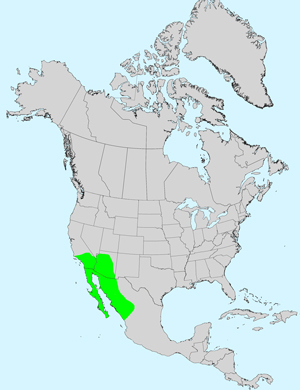
U.S. Weed Information: Unknown
Invasive/Noxious Weed Information: Unknown
Wetland Indicator: Unknown
Threatened/Endangered Information: Unknown
The genus Ambrosia was published by Carl Linnaeus in 1753.
In the Southwestern United States: Arizona has 15 species of genus, California has 14 species, Nevada and New Mexico each have 8 species, Texas and Utah each have 10 species. Data includes Hymenoclea. All data approximate and subject to revision.
Comments: Ambrosia Leaf Bur Ragweed or Canyon Ragweed is limited in distribution in the United States to Arizona and California. It is common throughout much of Arizona but is limited to San Diego County in California. Ambrosia Leaf Bur Ragweed is one of several Ragweed species whose pollen causes hay fever and allergies in some people.
Also see in Southwest Desert Flora Triangle-leaf Bursage, Ambrosia deltoidea, White Bursage, Ambrosia dumosa, Hollyleaf Bursage, Ambrosia eriocentra, Burrobush, Ambrosia monogyra and Cheesebush, Ambrosia salsola.
The species epithet "ambrosioides" (ambrosio'ides:) means like the genus Ambrosia.
See ethno-botanical uses at Native American Ethnobotany, University of Michigan, Dearborn.

